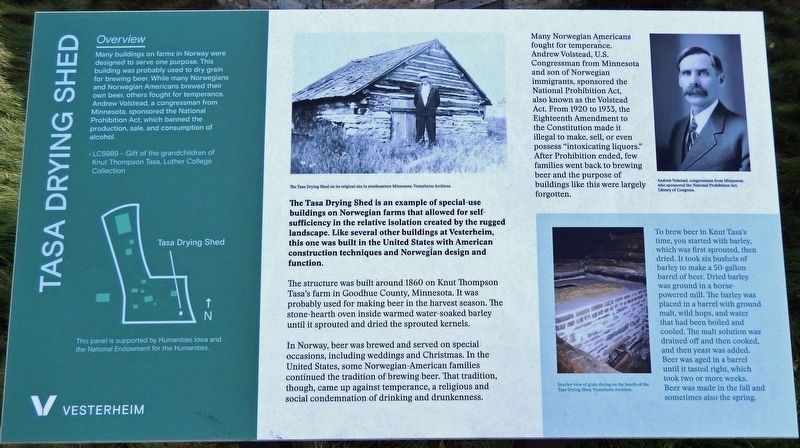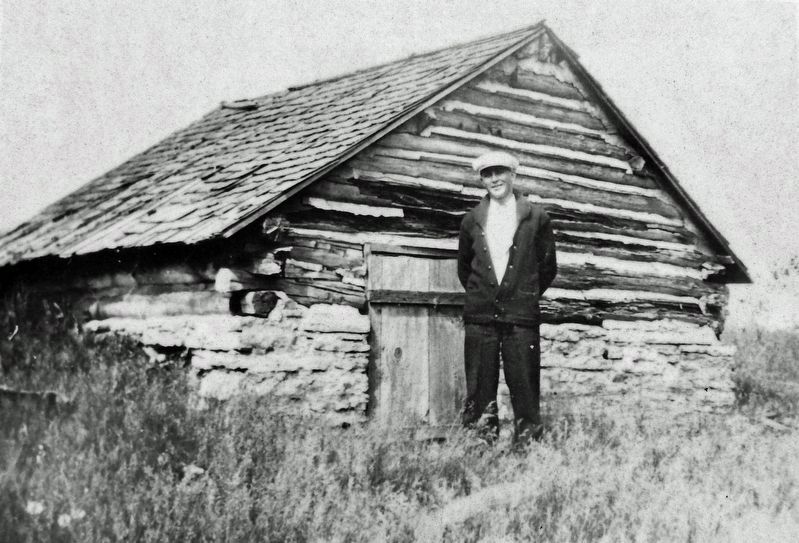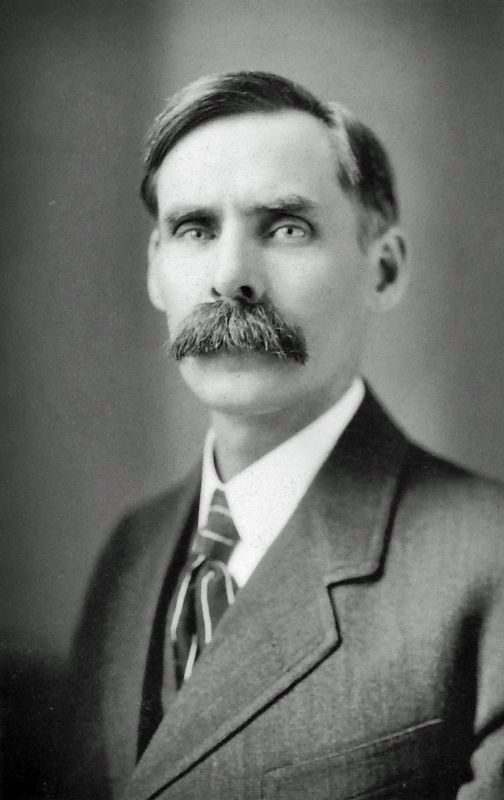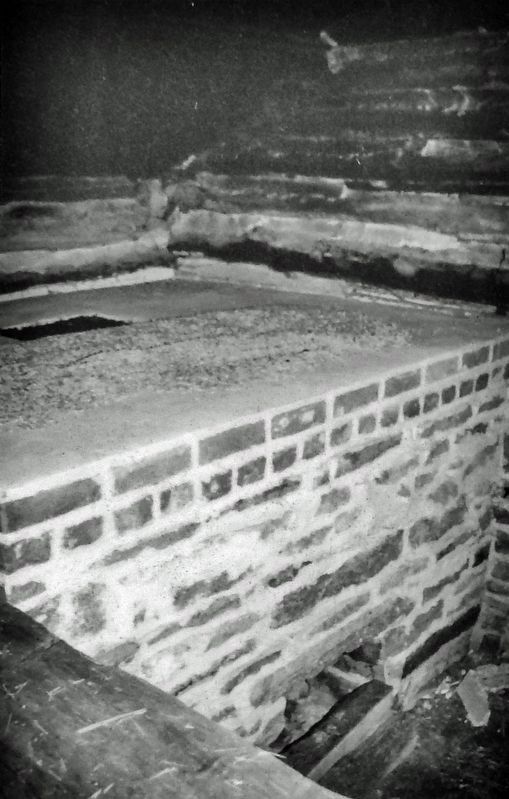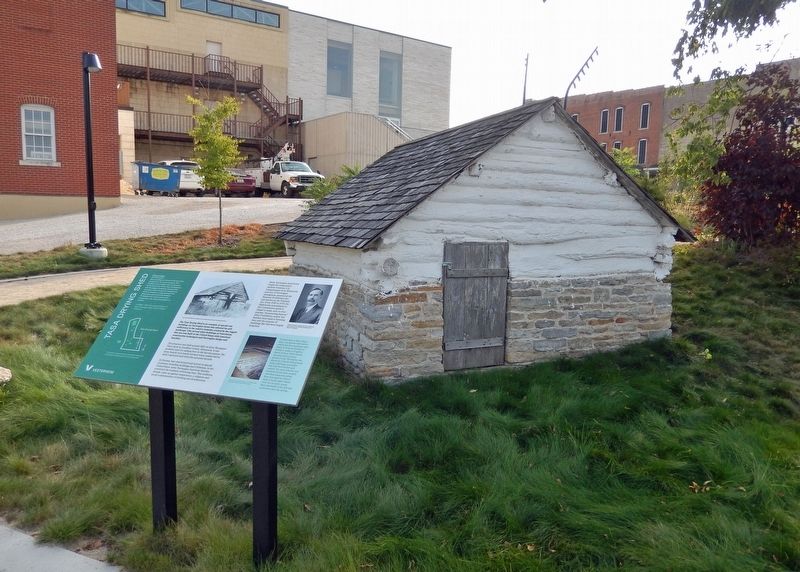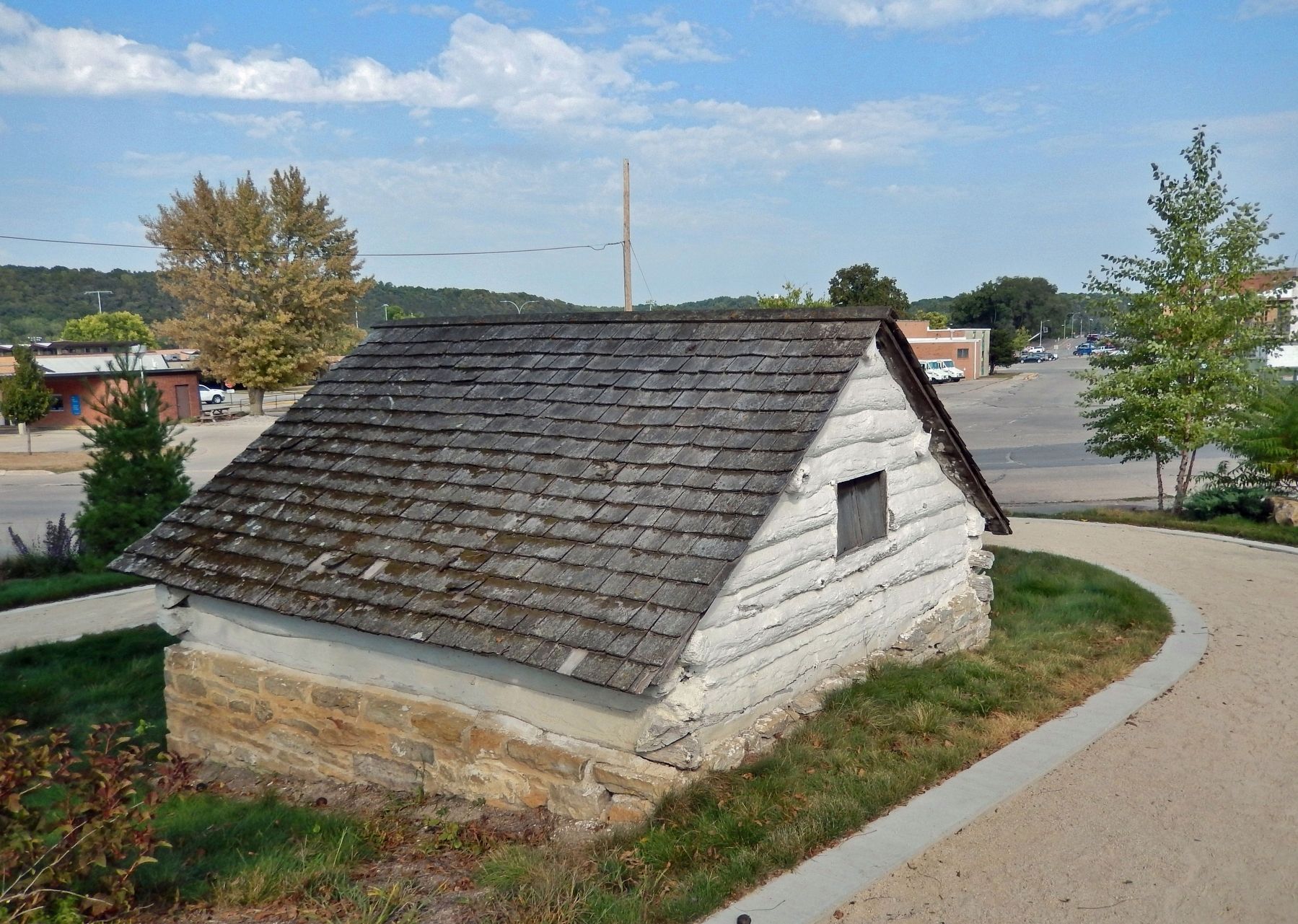Decorah in Winneshiek County, Iowa — The American Midwest (Upper Plains)
Tasa Drying Shed
Heritage Park, Vesterheim Norwegian-American Museum
Overview
Many buildings on farms in Norway were designed to serve one purpose. This building was probably used to dry grain for brewing beer. While many Norwegians and Norwegian Americans brewed their own beer, others fought for temperance. Andrew Volstead, a congressman from Minnesota, sponsored the National Prohibition Act, which banned the production, sale, and consumption of alcohol.
• LC5989 — Gift of the grandchildren of Knut Thompson Tasa, Luther College Collection
The Tasa Drying Shed is an example of special-use buildings on Norwegian farms that allowed for self-sufficiency in the relative isolation created by the rugged landscape. Like several other buildings at Vesterheim, this one was built in the United States with American construction techniques and Norwegian design and function.
The structure was built around 1860 on Knut Thompson Tasa's farm in Goodhue County, Minnesota. It was probably used for making beer in the harvest season. The stone-hearth oven inside warmed water-soaked barley until it sprouted and dried the sprouted kernels.
In Norway, beer was brewed and served on special occasions, including weddings and Christmas. In the United States, some Norwegian-American families continued the tradition of brewing beer. That tradition, though, came up against temperance, a religious and social condemnation of drinking and drunkenness.
Many Norwegian Americans fought for temperance. Andrew Volstead, U.S. Congressman from Minnesota and son of Norwegian immigrants, sponsored the National Prohibition Act, also known as the Volstead Act. From 1920 to 1933, the Eighteenth Amendment to the Constitution made it illegal to make, sell, or even possess “intoxicating liquors.” After Prohibition ended, few families went back to brewing beer and the purpose of buildings like this were largely forgotten.
To brew beer in Knut Tasa's time, you started with barley, which was first sprouted, then dried. It took six bushels of barley to make a 50-gallon barrel of beer. Dried barley was ground in a horse-powered mill. The barley was placed in a barrel with ground malt, wild hops, and water that had been boiled and cooled. The malt solution was drained off and then cooked, and then yeast was added. Beer was aged in a barrel until it tasted right, which took two or more weeks. Beer was made in the fall and sometimes also the spring.
Erected by Vesterheim Norwegian-American Museum.
Topics. This historical marker is listed in these topic lists: Agriculture • Architecture • Immigration • Settlements & Settlers. A significant historical year for this entry is 1860.
Location. 43°
18.284′ N, 91° 47.471′ W. Marker is in Decorah, Iowa, in Winneshiek County. Marker can be reached from the intersection of North Mechanic Street and West Day Spring Lane, on the left when traveling north. The marker is located in Vesterheim Norwegian-American Museum Heritage Park. Touch for map. Marker is at or near this postal address: 520 West Water Street, Decorah IA 52101, United States of America. Touch for directions.
Other nearby markers. At least 8 other markers are within walking distance of this marker. Wickney House (a few steps from this marker); Norsvin Mill (within shouting distance of this marker); Valders House (within shouting distance of this marker); Vesterheim (within shouting distance of this marker); Egge-Koren House (within shouting distance of this marker); Stabbur (within shouting distance of this marker); Welcome to Vesterheim (within shouting distance of this marker); Haugan House (within shouting distance of this marker). Touch for a list and map of all markers in Decorah.
Related markers. Click here for a list of markers that are related to this marker. Vesterheim Norwegian-American Museum Heritage Park
Also see . . .
1. Tasa Drying Shed. Excerpt:
Goodhue County, Minnesota (1860). This building is an example of special-use buildings on Norwegian farms, which allowed for self-sufficiency in the relative isolation imposed by the geography of Norway. Like several other buildings at Vesterheim, this is an American-made building with Norwegian design and function but constructed in a new way. It was used for brewing and for drying grain and could also serve as a bath house. Built by Knut Thompson Tasa primarily for harvest and Christmas brewing, the oven in the shed would be fired to warm water-soaked barley until it sprouted, after which the brewing would take place.(Submitted on November 23, 2023, by Cosmos Mariner of Cape Canaveral, Florida.)
2. Volstead Act (Wikipedia). Excerpt:
The National Prohibition Act, known informally as the Volstead Act, was an act of the 66th United States Congress designed to execute the 18th Amendment (ratified January 1919) which established the prohibition of alcoholic drinks. The Anti-Saloon League's Wayne Wheeler conceived and drafted the bill, which was named after Andrew Volstead, chairman of the House Judiciary Committee, who managed the legislation.(Submitted on November 23, 2023, by Cosmos Mariner of Cape Canaveral, Florida.)
3. Andrew Volstead (Wikipedia). Excerpt:
While in Congress, he served as chairman of the House Judiciary Committee from 1919 to 1923. Although often considered the author of the Volstead Act, he collaborated with Wayne Wheeler of the Anti-Saloon League, who conceived and largely drafted the bill. However, Volstead sponsored the bill and championed, promoted and facilitated its passage.(Submitted on November 23, 2023, by Cosmos Mariner of Cape Canaveral, Florida.)
Credits. This page was last revised on November 24, 2023. It was originally submitted on November 23, 2023, by Cosmos Mariner of Cape Canaveral, Florida. This page has been viewed 58 times since then and 13 times this year. Photos: 1, 2, 3, 4, 5, 6. submitted on November 23, 2023, by Cosmos Mariner of Cape Canaveral, Florida.
